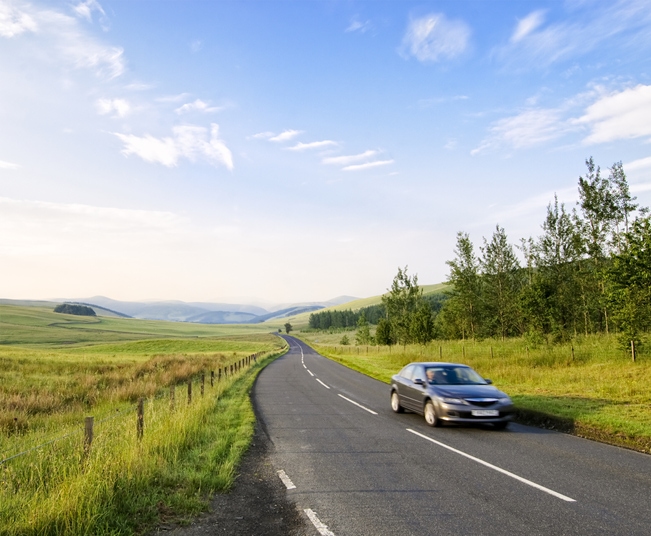How to prevent or lessen the impact of a rollover car accident

August 12, 2019. A rollover is one of the most frightening car accidents you can be involved in. Transportation Alberta found that in 2015, 1,253 vehicles were involved in rollover collisions, with 77 of them being involved in fatal collisions. While only 5.2 percent of vehicles that were involved in car accidents with injuries or fatalities were in a rollover accident, 17.3 % of vehicles that were in a rollover collision were also in a fatal collision. Rollover collisions were the 2nd most fatal type of accident, after centre front collisions, which resulted in 229 vehicles being involved in fatal collisions. While your chances of being in a rollover car accident are small, they are a disproportionately dangerous type of collision.
It is important to understand what causes rollovers and know what to do to minimize an impact because even the safest drivers may experience one in the wrong circumstances.
What causes rollovers?
Vehicle type and weight distribution
Tall vehicles, such as SUVs, trucks, vans, and cargo vans are at risk and drivers should be extra cautious on winding roads and windy days. According to Global News, in 2017, SUVs became the most popular type of vehicle in Alberta, accounting for over 40% of new vehicle sales. Trucks made up 35% of the market. Cars made up less than 19% of the market, which means that a high percentage of drivers own a vehicle that is susceptible to rollover accidents.
Speed
Most rollovers happen in areas with high speed limits (over 80 km/h).
Overcorrecting
Overcorrecting is a natural reaction to going too fast for the situation and can happen when you drive across snow or soft soil. Braking too hard or steering too much or too suddenly can make your vehicle off-balance and cause it to tip or roll.
Road type
Undivided, two-way roads, divided roads without barriers, and rural roads have the highest incidence of fatal rollovers. Rural roads have a high incidence of speeding, which is a factor in rollovers. In Alberta, fatal collisions in general occur most often in rural areas.
How well you know the road
Driving on unfamiliar roads means there can be unexpected turns that may lead to accidents.
Alcohol
According to Alberta Transportation, in 2016 in Alberta 16.3% of drivers who were in fatal collisions consumed alcohol before the crash.
Driver type
According to Alberta Transportation, male drivers aged 18 and 19 have the highest rate of casualty accident involvement.
How to help prevent a rollover
- Do not speed.
- Be aware of the center of gravity of your vehicle if it is a truck, van, or SUV because those with a higher center of gravity are more likely to be in rollover accidents.
- Be extra cautious when driving in rural areas, on roads with a high speed limit or no barriers, and on roads you do not know.
- Avoid distracted driving and driving under the influence of drugs or alcohol.
What to do if your vehicle is about to roll over
In some situations, a rollover can be unpreventable. You can take steps to mitigate your risk of injury or death.
Always wear your seat belt
According to Alberta Transportation, people who wear their seatbelts when they were in an accident have a much higher chance of being injury-free. In 2016, 24.1% of people who were not wearing seatbelts were injured, compared to 6.8% of people who were wearing a seatbelt. Due to the nature of rollover accidents, the vehicle occupants have a high chance of injury or death, especially if ejected from the vehicle. Wearing your seatbelt can be the most important thing you do to reduce the impact of a rollover collision.
Get ready for impact
- Remove your feet from the pedals to avoid ankle injuries, cross your arms over your chest, and lean into the seat.
- Do not try to cover your head by bending over because airbags can cause neck injuries if you do.
Turn off the engine
Turn off the engine if you are able to.
Stay calm
Stay calm after the crash has happened to avoid further injury if you are hurt. Asses injuries of vehicle occupants and call 911.
Exit the vehicle
- If it is possible to exit the vehicle and it is upside down, brace yourself on the ceiling and floor and very carefully undo your seatbelt (this is where most post-crash injuries happen).
- Determine the safest exit and go towards it. You may be able to open the door but might have to break the glass.
- Clear your exit path of any glass or sharp objects.
- Get away from the vehicle and other traffic.



.jpg?300x300)